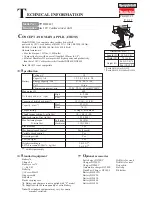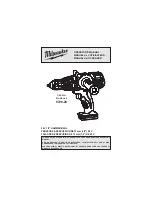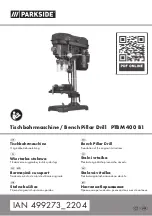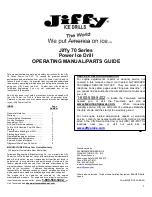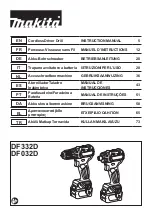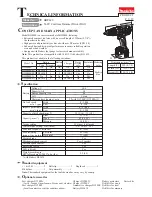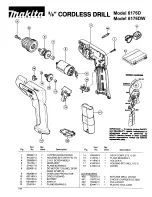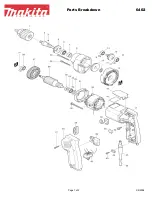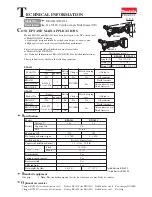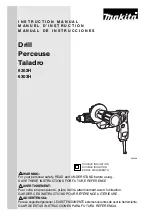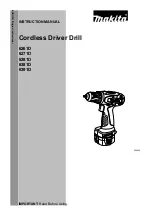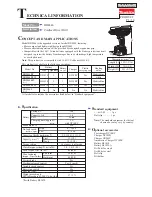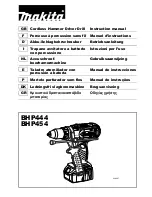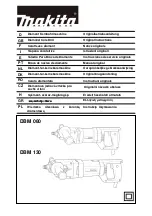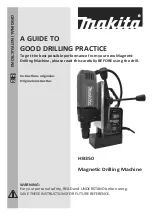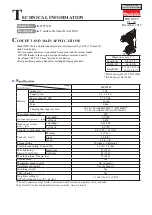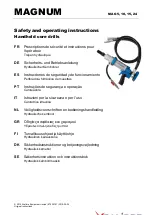
Symbols
The followings show the symbols used for the equipment. Be sure that you understand their meaning before use.
• Indoor use only.
• Read instruction manual.
• DOUBLE INSULATION
• Ready to charge.
• Charging.
• Charging complete.
• Delay charge (Battery cooling, or
too cold battery).
• Defective battery.
• Delay charge (Too hot or too cold
battery).
• Cooling abnormality.
• Do not short battery.
• Do not destroy battery by fire.
• Do not expose battery to water or
rain.
• Always recycle battery.
Specification:
Model
DC10SB
DC10WD
Input
A.C. 120 V 50 – 60 HZ
Output
D.C. 10.8 V – D.C. 12 V (max.)
Weight
0.63 kg (1.5 lbs)
0.35 kg (0.77 lbs)
• Due to our continuing program of research and development, the specifications herein are subject to change without
notice.
• Specifications may differ from country to country.
• Weight according to EPTA-Procedure 01/2003
IMPORTANT SAFETY INSTRUCTIONS
CAUTION:
1.
SAVE THESE
INSTRUCTIONS
– This manual contains important safety and
operating instructions for battery charger.
2. Before using battery charger, read all instructions
and cautionary markings on (1) battery charger, (2)
battery, and (3) product using battery.
3. CAUTION – To reduce risk of injury, charge only
Makita type rechargeable batteries. Other types
of batteries may burst causing personal injury and
damage.
4. Non-rechargeable batteries cannot be charged with
this battery charger.
5. Use a power source with the voltage specified on the
nameplate of the charger.
6. Do not charge the battery cartridge in presence of
flammable liquids or gases.
7. Do not expose charger to rain or snow.
8. Never carry charger by cord or yank it to disconnect
from receptacle.
9. After charging or before attempting any maintenance
or cleaning, unplug the charger from the power
source. Pull by plug rather than cord whenever
disconnecting charger.
10. Make sure cord is located so that it will not be
stepped on, tripped over, or otherwise subjected to
damage or stress.
11. Do not operate charger with damaged cord or plug. If
the cord or plug is damaged, ask Makita authorized
service center to replace it in order to avoid a hazard.
12. Do not operate or disassemble charger if it has
received a sharp blow, been dropped, or otherwise
damaged in any way; take it to a qualified
serviceman. Incorrect use or reassembly may result
in a risk of electric shock or fire.
13. The battery charger is not intended for use by young
children or infirm persons without supervision.
14. Young children should be supervised to ensure that
they do not play with the battery charger.
15. Do not charge battery cartridge when room
temperature is BELOW 10°C (50°F) or ABOVE 40°C
(104°F). At the cold temperature, charging may not
start.
16. Do not attempt to use a step-up transformer, an
engine generator or DC power receptacle.
17. Do not allow anything to cover or clog the charger
vents.
DC10SB
DC10WD
IMPORTANT:
Read Before Using.

















